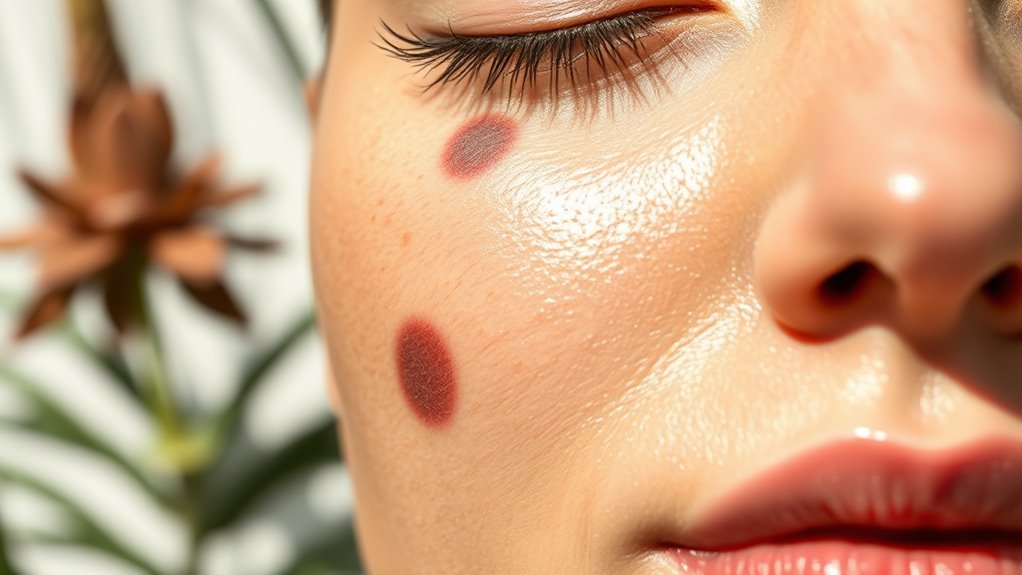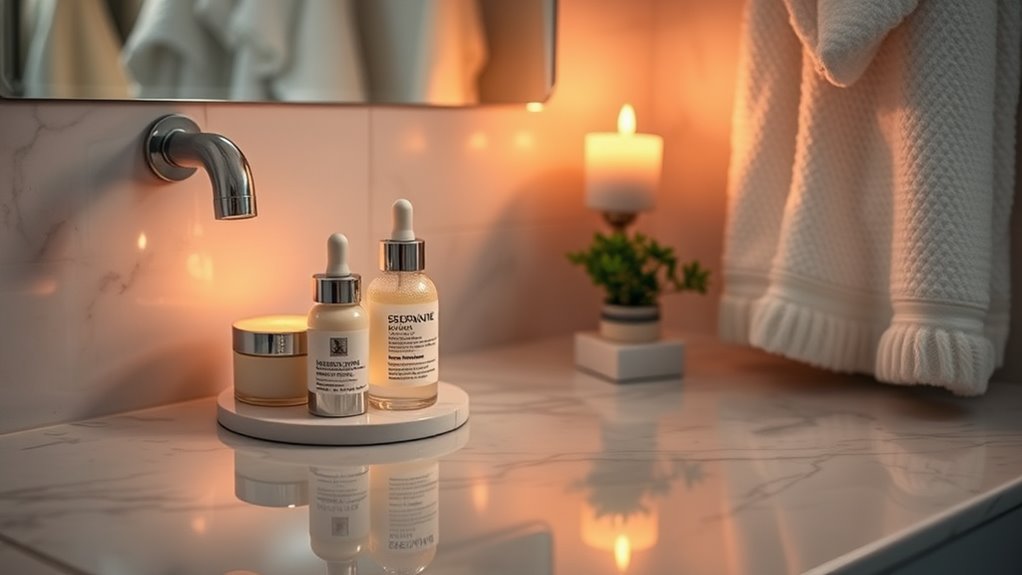How to Get Rid of Dark Spots Without Damaging Your Skin
If you’re struggling with dark spots and want to improve your skin without causing damage, it’s essential to adopt a careful approach. Start by integrating sunscreen into your daily routine and explore gentle exfoliation methods. But don’t stop there—there are other effective treatments that can enhance your results. Understanding the right products and techniques could make all the difference in your journey to clearer skin. What’s the next step you should take?
Key Takeaways
- Use a broad-spectrum sunscreen with at least SPF 30 daily to prevent new dark spots and protect your skin from UV damage.
- Incorporate Vitamin C and Niacinamide into your skincare routine to brighten skin and improve its tone without irritation.
- Exfoliate gently with alpha hydroxy acids two to three times a week to remove dead skin cells and reveal healthier skin underneath.
- Consider professional treatments like chemical peels or laser therapy for targeted dark spot reduction, ensuring they are performed by a qualified dermatologist.
- Always patch test new products to avoid irritation and ensure compatibility with your skin type before full application.
Effective Tips for Dark Spot Removal
Have you ever wondered why dark spots appear on your skin? These pesky blemishes often result from sun exposure, hormonal changes, or skin aging. If you’re determined to tackle them without damaging your skin, you’ll need some effective dark spot removal tips.
First, consider incorporating a sunscreen with at least SPF 30 into your daily routine. Protecting your skin from UV rays is essential; it not only prevents new spots from forming but also helps fade existing ones.
Next, explore products containing ingredients like vitamin C, niacinamide, or alpha hydroxy acids. These powerhouse ingredients work by promoting cell turnover and brightening the skin. When applying such products, be consistent—results take time, but your patience will pay off. Remember to patch test any new product before applying it broadly to avoid irritation.
Another effective strategy involves incorporating gentle exfoliation into your regimen. Regularly exfoliating your skin helps remove dead skin cells, allowing brighter skin to shine through. However, don’t overdo it—two to three times a week should suffice to maintain your skin’s barrier without causing damage.
Finally, consider consulting a dermatologist for professional treatments like chemical peels or laser therapy. These options can greatly reduce dark spots but require a skilled touch to minimize risks. Always prioritize your skin’s health and opt for treatments that suit your individual skin type. Additionally, look for products that include kojic acid as it is known for its effectiveness in targeting hyperpigmentation.





